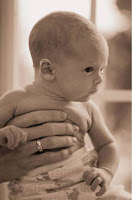
While being an independent midwife has it's struggles and I often feel like the birthing services are getting worse instead of better, - there are many people working behind the scenes to improve the care women and their families receive. Belmont Birthing Services is a fantastic example of what can be achieved with the right support. The following information is written (and reproduced with permission) by Carolyn Hastie
Hi all, thought I'd write and give you all an update on what's happening at Belmont Birthing Service (BBS) on the shores of the beautiful Lake Macquaire near Newcastle, NSW.
To remind you about BBS, we are a stand alone, women centered, midwifery managed maternity service, situated with in Belmont Hospital. We are a public health service, part of the maternity services offered through John Hunter Hospital. There are 8 of us, seven midwives and one manager. We care for women throughout pregnancy, birth and the postnatal period for two to three weeks. Our service commenced on the 4th July 2005, so we are almost three years old.
We have now cared for 651 women through the birth of their babies and beyond.
72% are having their babies on site at Belmont.
The normal birth rate, even for those women who are transferred to the tertiary referral hospital, either in labour or before is > 95%
Reasons for transfer are predominately post dates for induction of labour and slow progress in labour - either requiring pain relief or augmentation. Interestingly, there were far more transfers in the first two years of our service than there are now. That is due to several factors including the fact that in the first year, women who were Group B Strep positive were transferred for antibiotic cover. Since then, all the midwives have been credentialled as immunisers, so can give IV antibiotics without medical presence. Chlorhexidine douches are very popular and effective for GBS prophylaxis and most women choose to use that as they are not keen on antibiotics.
Other stats you may find interesting include:
- most of the women choose to birth their babies through the water - the baths at BBS are wonderful.
- most of the women choose undisturbed labour, including third stage and so the physiological third stage rate is very high blood loss rates are very normal, postpartum haemorrhage is exceedingly rare there have been only two women with elevated blood pressure (no actual Preclampsia) prenatally and one postnatally.
- there have been five premature births and those babies were one at 32 weeks, the rest at 34-36 weeks.
- Four women have had breech babies and given birth at the tertiary referral hospital.
We are very blessed to have great midwifery and medical management and our health executive are fantastic, very supportive of our service and other innovative ways of caring for the health needs of their population.
Other great items include:
- Hunter New England Health has an area wide homebirth policy based on the wonderful NSWHealth Homebirth policy and we are now able to provide homebirth for those women who choose that option. Our first homebirth occurred on Christmas Day 2007. We have a virtual ward and virtual nursery for these births and babies.
- Intradermal water injections are used as needed and have been very beneficial to the women who have used them.
- The midwives have admitting rights and now women are admitted with the midwife's name as care provider.
- Across the health service, routine birthing medications, such as syntocinon, N2O, Konakion and Hep B, Priorix are now midwife initiated medications, so no doctor's signature is necessary for their administration.
It's all very exciting and wonderful to see the way that everyone in the health service is supportive of enabling women and midwives to work together to keep birth normal and rewarding for everyone.
love, Carolyn Hastie
Midwifery Manager
Belmont Birthing Service
0428112786
To download a flyer on
Belmont Birthing Service (PDF Document)












